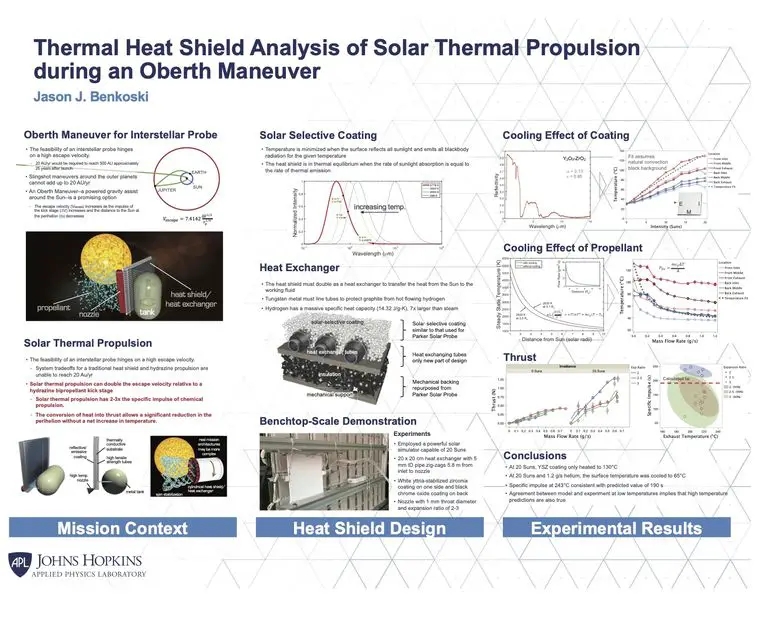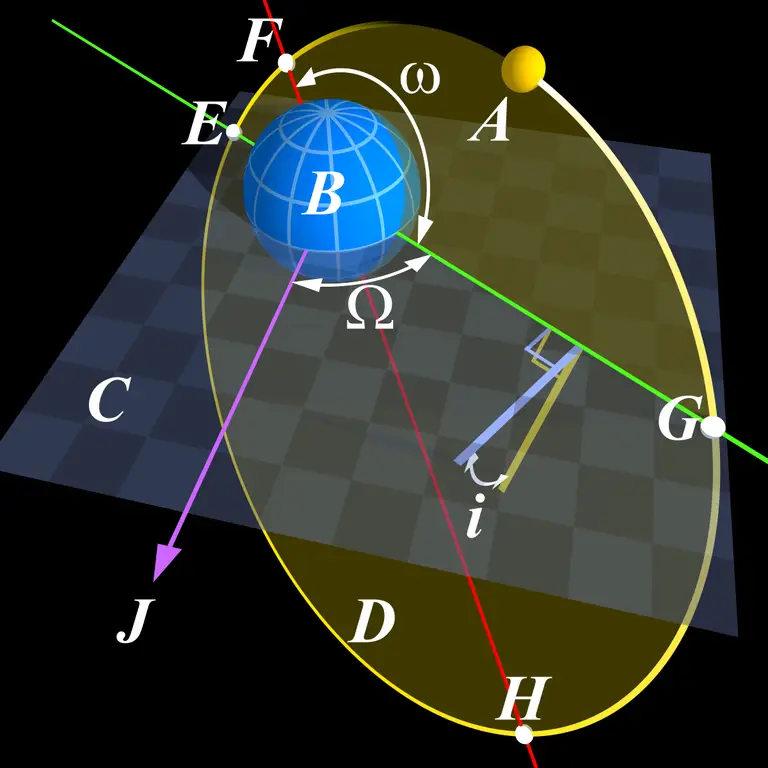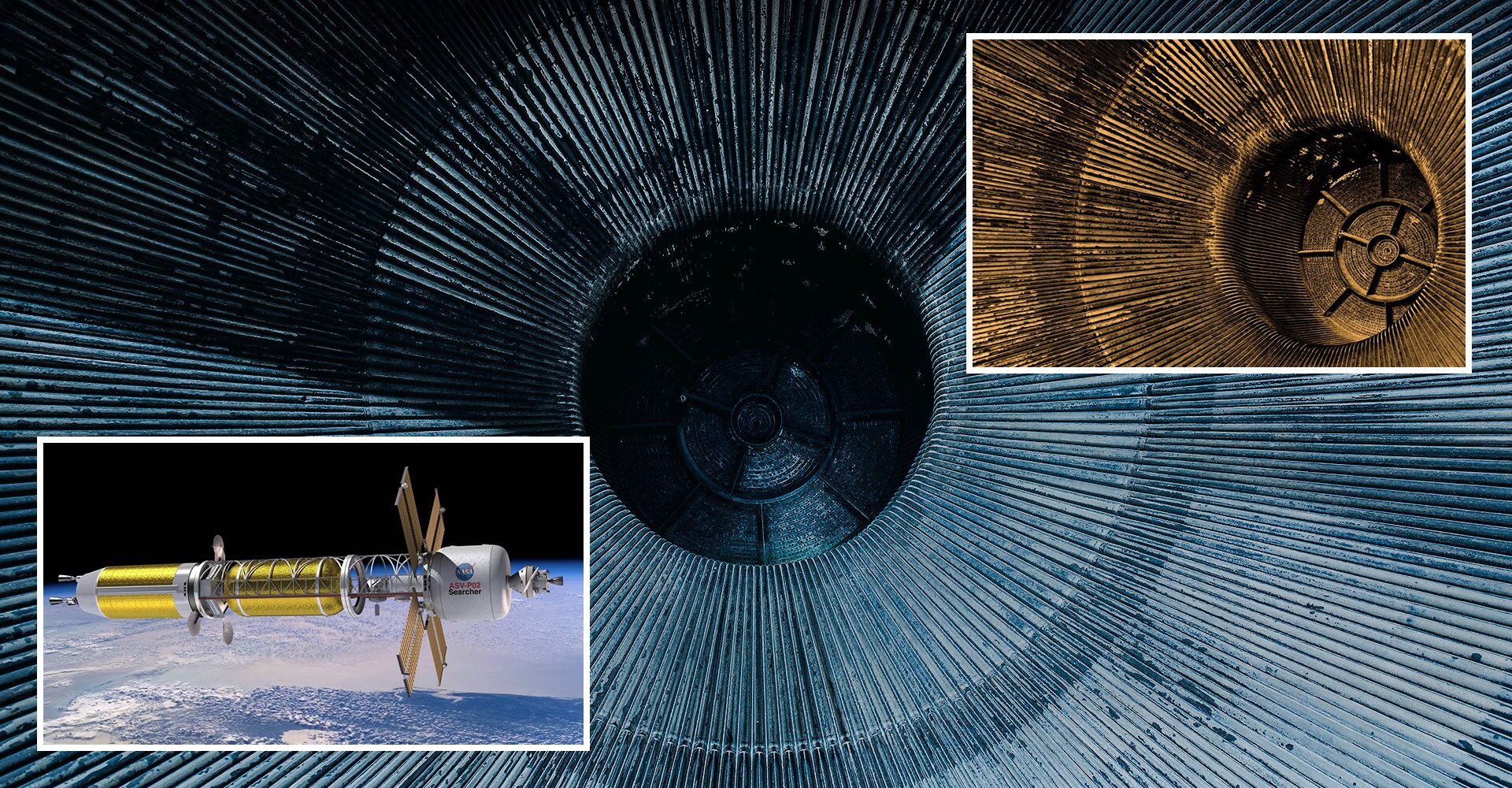A previously theoretical rocket concept is being prototyped by engineers at the Johns Hopkins University Applied Physics Laboratory in the hopes of one day transporting astronauts and spacecraft to interstellar space.
What is their strategy? Instead of using combustion to fuel a rocket engine, solar heat may be used to do so.
To distinguish it from a regular rocket engine, which is situated on the back end of the rocket, the experimental solar-powered engine is in the form of a flat shield made of black carbon fiber.
It is anticipated that the engine will also serve as a heat shield, shielding the spacecraft from the sun’s intense rays, while coils of tubing filled with hydrogen located under the surface would absorb heat generated by the sun.

It generates propulsion as the hydrogen expands and gets compressed, and then bursts out of an exhaust nozzle. Solar thermal propulsion is the term used by scientists.
As a materials scientist at the Applied Physics Laboratory (APL), Jason Benkoski told WIRED, “From a physics viewpoint, it is difficult for me to foresee anything that would exceed solar thermal propulsion in terms of efficiency.” “Can you, however, prevent it from exploding?”
During the 3rd Annual Interstellar Probe Exploration Workshop, Benkoski and his colleagues from APL and NASA recently published their concept online with the rest of the scientific community. It is possible that a real-world version of Benkoski’s engine might be three times more efficient than the most modern chemical combustion engines now used by rockets, according to his estimates.

In 2019, NASA and APL will begin work on the Interstellar Probe project, which will be launched in 2019. The results of the study will be used to evaluate which missions may be conducted in the next decade to conduct scientific research outside of our sun’s sphere of influence.
Even though there is no universally accepted definition of where the solar system ends and interstellar space begins, one metric that scientists use is the boundary at which the sun’s magnetic fields and solar winds, which make up the heliosphere, can no longer be detected—what scientists refer to as the heliopause.
It is the goal of APL to develop a probe that will be able to go three times as far as the outermost limits of the heliosphere in less than two decades, covering a distance of 50 billion miles. To put that into perspective, let us take a look at the person who now holds the world record for the farthest mileage traveled in one day.
During the year 2012, the Voyager 1 spacecraft made history by becoming the first man-made object to go beyond the bounds of our solar system. NASA’s Cassini space probe launched from NASA’s Kennedy Space Center in 1977 atop a Titan III rocket on a two-year voyage to Jupiter, where it was slingshotted out of its orbit by the gas giant’s tremendous gravity and sent on a three-year journey to Saturn, Uranus, and Neptune. (You may see the spacecraft’s whole chronology by clicking here.)
After over four decades of journey, Voyager 1 has reached a distance of more than 14 billion miles away from the planet and is flying at a speed of 38 thousand miles per hour (mph). It is the goal of the APL team to break this record by speeding their spacecraft to 200,000 miles per hour and cutting the journey’s duration in half.
To pull it off, the spaceship will have to conduct another first: an Oberth maneuver a million miles from the sun’s scorching surface. Hermann Oberth, one of the modern rocketry’s creators, coined the maneuver, which makes use of a celestial body’s gravitational pull by utilizing a spacecraft’s engines to accelerate its fall into a gravitational well, as shown here:

It is similar to sprinting down a hill to generate speed for the ascent. The simpler it is to acquire speed and maximize your energy the steeper the slope is, or the closer you are to a gravitational mass like the sun. What is the issue? The sun is scorching hot.
The Parker Solar Probe, operated by NASA, will make its closest approach to the sun in 2025. It will approach the sun’s surface at a distance of 4 million miles, travel at speeds of over 400,000 mph, and endure temperatures of up to 2,500 degrees Fahrenheit. NASA fitted the probe with a 4.5-inch thick carbon-composite cover to protect it from the heat of the massive nuclear reactor.
If APL wants to launch its probe within a million miles of the sun, it will have to conduct the Oberth maneuver at temperatures about 4,500 degrees Fahrenheit for 2.5 hours. That is why NASA is researching novel materials that might be used to cover the spaceship and deflect the heat from the sun. Furthermore, the hydrogen flowing through the heat shield might operate as a radiator, allowing the thermal energy to be used as a propellant.
“We aim to build a spaceship that will go quicker, further, and closer to the sun than anything else,” Benkoski told WIRED. “It is like the most difficult thing you could accomplish.”
Next year, Benksoski and his colleagues at APL want to submit a report on the results of their experimental rocket design.

